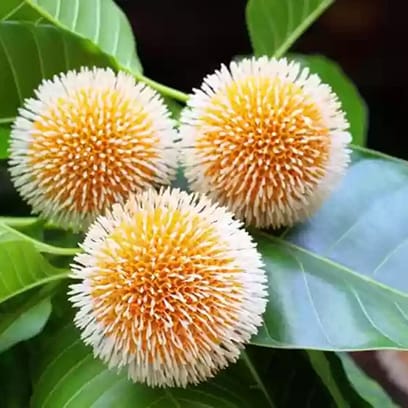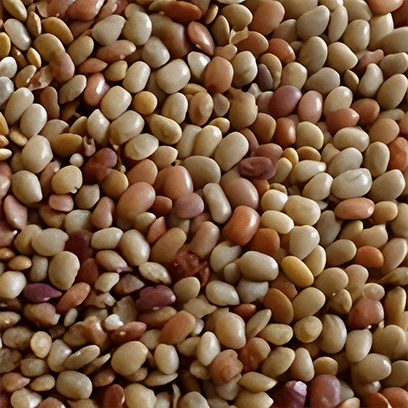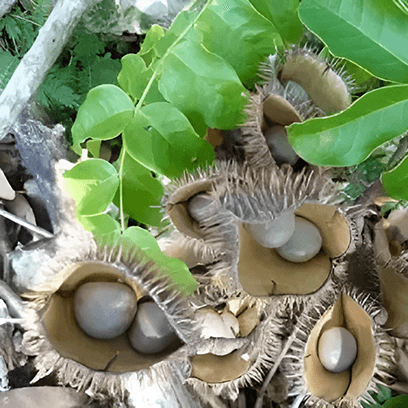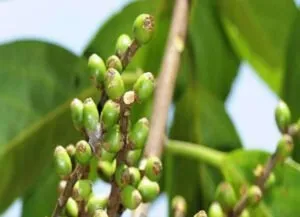On This Page
Lodhra – Symplocos racemosa
Introduction
Lodhra, commonly known as Lodh tree is found abundantly in Indian forests and one of the commonly used herb for Ayurvedic treatments. The name Lodhra itself means that the plant has property of arresting bleeding. Symplocos means that the stamens of the plant are united at the base, having an inflorescence with long undivided axis and racemosa means it is arranged in the form of a cluster of grapes. Lodhra have many uses.
Dr.Gupta’s IAFA has been consistently working on the plant for knowing more medicinal properties of Lodhra. The plant can be used as a Haemostatic, Coagulant, Astringent , stimulant, anti-inflammatory, analgesic, and antimicrobial agent. Lodhra can cure diseases like Cough, Asthma, Leucorrhoea, Anaemia, Fever, Worm infestations, Allergies etc. The ethanol extract of bark have hepatoprotective action. We also proven that the plant can be used in lypoxygenase inhibiting due to ethyl substituted glycoside present in the plant. Nowadays we are working hard to prove the antiallergic property of the plant and found to be successful.
Action of Lodhra – Symplocos racemosain Allergies
IAFA experts have successfully proven the antiallergic and anti-inflammatory properties of the plant Lodhra. The plant contains phytoconstituents like triterpenoidsaponin, B-sitosterol, flavonol ,glycoside ,rhamnetin ,arabinogalactan which aids in the antiallergic and anti-inflammatory properties of the plant. The Decoction prepared from the bark of the plant can be used for skin allergy.
Vernacular Names
| Native Names | |
| Sanskrit Name | Lodhra |
| Hindi Name | Lodh |
| English Name | Lodhtree |
| Malayalam Name | Pachotti |
| Kannada Name | Pachettu |
| Marathi Name | Lodhra |
Botanical Name
Symplocos racemosa
Family
Symplocaceae
Morphology of Lodhra – Symplocosracemosa
- Stems – up to 20 ft. in height and 15 cm in diameter.
- Bark- Dark grey, rough blaze 7-13 mm thick shortly , pale yellow in color .
- Leaves – 9 to 18 cm long and 3 to 5 cm wide, alternate, elliptic-oblong or elliptic lanceolate,
- Flowers- 1 to 1.5 cm in diameter white fading yellow. Petals seen in 2 series stamens usually numerous and ovary is inferior, 3 celled.
- Fruit- Drupe, 1 to 1.3 cm long. oblong, glabrous, purplish black, crowned with persistent calyx.
Ayurveda reference of Lodhra – Symplocosracemosa

Geographical distribution of Lodhra – Symplocosracemosa
Lodhrais found throughout India especially inSouth Indian states. The tree commonly seen in plains of Eastern and Northern India. Also seen in parts of Kerala and Karnataka.
Phytoconstituents of Lodhra – Symplocosracemosa
- Stem bark has triterpenoidsaponin, B-sitosterol
- Leaves contain flavonol,glycoside ,rhamnetin,arabinogalactan.
Parts used of Lodhra – Symplocosracemosa
- Stem bark
Dosage of Lodhra – Symplocosracemosa
- Powder -3-5gm (churnam)
- Decoction – 60-90ml (kwatha)
Medicinal Properties of Lodhra – Symplocosracemosa
- Caksushya- improves eyesight
- Jwarahara-alleviates fever
- Kasahara – relieves cough
- Sulahara-relieves pain
- Sophahara – relieves swelling
- Swasahara – relieves asthma
- Kushtaghna-alleviateskindisorders
- Krimighna – useful in worm infestations
- Kandughan- relieves itching
- Vishaghna – useful in poisoning
- Vranahara – useful in wounds

Have A Health Issue?
Consult Online
- Dr. Sahil Gupta (B.A.M.S., M.H.A.)
Ayurvedic Allergy Specialist
CEO & Founder of IAFA®
Home remedies of Lodhra – Symplocosracemosa
- Ayurveda is an ancient treatment system which is purely based on naturally available herbs whichare toxic free and have no side effects at all. Lodhrais one of the most readilyavailable herb. So it can be used in treating many diseases like,
- In Leucorrhoea (PanduraPradara) – The paste of bark of Lodhra is taken with decoction of Ficusbengalensis. It will alleviate Leucorrhoea.
- In Dysentery (Pravahika) –Intake of curd with Lodhra will check dysentery. It can be taken untill complete relief of the condition.
- In Fever (Jwara) – Decoction made with leaves of Lodhra and taken internally at a dose of 60 ml.
- In Inflammation (Sopha) – Paste prepared from Lodhrabark and ghee is applied over the skin part.
- In thirst (Thrishna) – Cut pieces of Lodhra is taken and boiled in water. It is then taken orally to relieve thirst.
- In Acne (Mukhadusika) – Application of paste of Lodhra and Alum in face will reduce acne.
- For better eyesight (Cakshushya) – Daily intake of Decoction made with bark of Lodhra will improve eyesight.
- In Cough (Kasa) – Decoction made with leaves of Lodhra. It is then taken orally to relieve Cough.
Dr. Gupta’s IAFA mainly aims in promotion of Ayurvedic science by adopting treatment methods mentioned in classic textbooks like Susrutha Samhitha and Ashtanga hridaya. We follows strict guidelines to ensure the safety of all consumers. We completely uses toxic free herb by subjecting them to various tests. Our experts are updating the medicinal properties of herbs regularly and brings you the best medicines.
Reach IAFA for safe herbal remedies for all your ailments!!!
Was this Page Helpful?
Read More Articles
-

Kadamba (Neolamarckia cadamba)
Know about therapeutic uses, benefits and indications of Kadamba (Neolamarckia cadamba). It…
-

Kulattha (Dolichos biflorus)
Know about therapeutic uses, benefits and indications of Kulattha (Dolichos biflorus). It…
-

Latakaranja (Caesalpinia crista)
Know about therapeutic uses, benefits and indications of Latakaranja (Caesalpinia crista). It…







